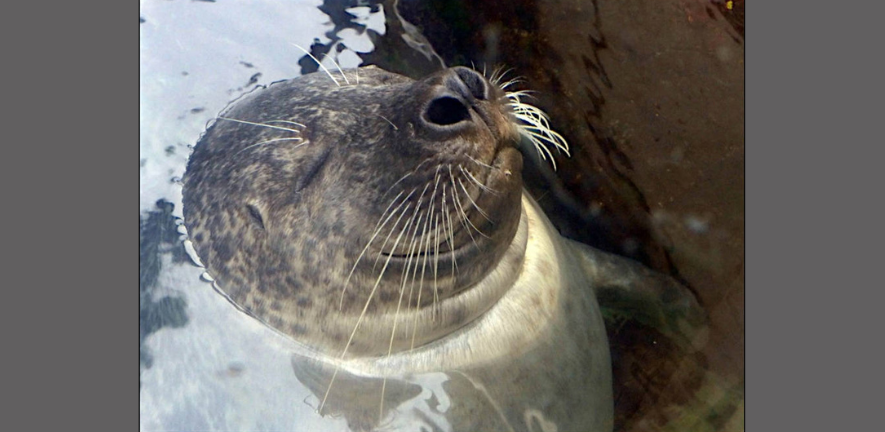
Submitted by Emily Rigby on Fri, 22/12/2023 - 13:07
Researchers, including PDN Professor of Comparative Physiology, Matthew Mason, have discovered the key to how Arctic seals stay warm in icy climates: intricate, maze-like nasal passages.
Many birds and mammals, including humans, have a pair of thin, porous nasal bones called maxilloturbinates or nasal concha, which are covered by a layer of tissue. “They take the form of scrolls, or a branching form a little bit like a tree,” says Professor Mason.
As we breathe in, air flows through the maxilloturbinates first, which allows the surrounding tissues to warm and humidify the air before it reaches the lungs. When we exhale, the air follows the same route back out, trapping heat and moisture so it isn’t lost. The more complex the shape, the greater the surface area and the more efficient it is at its job.
Animals that live in cold and dry environments, such as Arctic reindeer, have been found to have more complex maxilloturbinates than animals that live in warmer climates. Now, Professor Mason and his colleagues have found that Arctic seals have the most complex maxilloturbinates ever described; and it is this that helps the seals retain heat and moisture more efficiently as they breathe.
The researchers took CT scans of the bearded seal (Erignathus barbatus), generally found in the Arctic, and the Mediterranean monk seal (Monachus monachus). Although both species had intricate maxilloturbinates, the team found that the bearded seal’s nasal bones were much denser and more complicated than any seen before.
Using a computer model that measured how much energy is lost as heat in physical processes, Mason and his colleagues tested both seals under under Arctic conditions (-30◦C), and at 10◦C, which would represent a cold day for a Mediterranean monk seal.
Per breath at -30°C, the Mediterranean monk seal lost 1.45 times as much heat and 3.5 times as much water as the bearded seal. Similarly, at 10°C, the monk seal lost about 1.5 times as much water and heat as the Arctic seal.
The model indicated that Arctic seals are much more efficient than subtropical seals at retaining heat and water exchange in both Arctic and Mediterranean ambient temperatures. At -30◦C, the subterranean seals lost 1.45 times as much heat and 3.5 times as much water per breath cycle as the Arctic seals, and at 10◦C, the subterranean seals lost 1.5 times as much heat and 1.7 times as much water.
In future, the researchers hope to study the nasal structures of other species, to see if different structures provide evolutionary advantages in other environments.
This research was supported by the Research Council of Norway and the Tromsø Research Foundation.
Biophysical Journal, Cheon et al., “Structure-function relationships in the nasal cavity of Arctic and subtropical seals”

